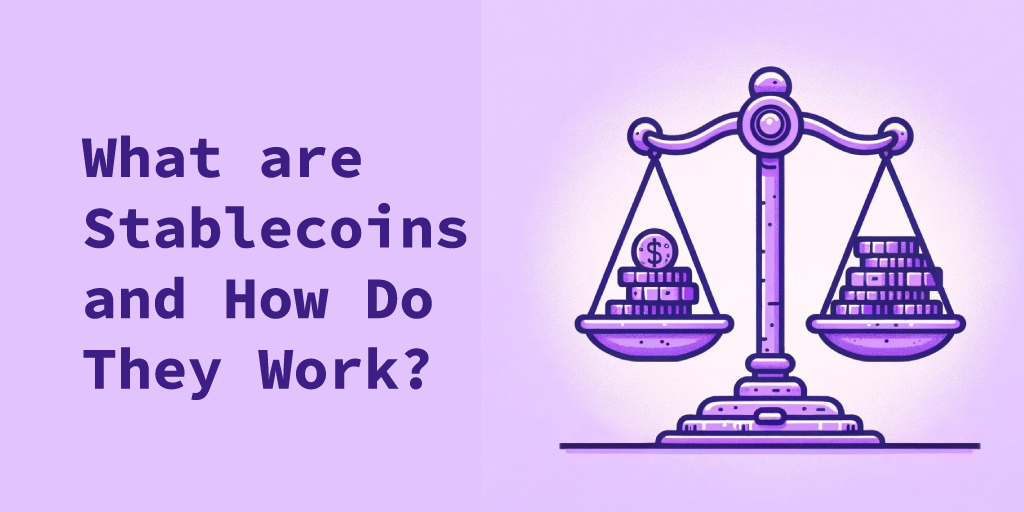
The cryptocurrency market is filled with exciting innovations and constant changes. Within this dynamic world, stablecoins have carved out a special place for themselves. Despite the inherent volatility of cryptocurrencies, stablecoins offer a haven by minimizing this variability. As part of the crypto economy, stablecoins significantly reduce the impact of market fluctuations by pegging their value to traditional assets — usually a national currency. This blog will explore what stablecoins are, their advantages, risks, and the role they play in the crypto market in detail.
What is a Stablecoin?
Stablecoins are one of the most significant innovations in the world of cryptocurrencies. Essentially, these digital assets peg their value to a more stable asset or basket of assets. This pegging can be to traditional currencies like the dollar, precious metals like gold, or even other cryptocurrencies. The idea is for the value of stablecoins to fluctuate in line with the value of these pegged assets, protecting against the extreme price volatility of the crypto market.
Stablecoins are generally categorized into three main types:
- Fiat-Backed Stablecoins: These are backed 1:1 by traditional currencies held in a bank account. For example, behind each stablecoin unit is an actual dollar held in a supporting bank.
- Crypto-Backed Stablecoins: These types of stablecoins are typically over-collateralized and backed by other cryptocurrencies through smart contracts on the blockchain, offering an extra layer of security against market fluctuations.
- Algorithmic Stablecoins: These use complex algorithms to maintain their value stable by automatically adjusting supply based on market conditions. They are not directly backed by any physical or digital assets but instead, adjust their value according to supply and demand dynamics.
Stablecoins combine the transparency and security of blockchain technology with the stability of traditional finance. These features make stablecoins attractive for both daily transactions and long-term investments.
Advantages of Stablecoins
Stablecoins hold a unique position in the crypto ecosystem, offering several key advantages to users. These benefits are the primary reasons for their increasing popularity in the crypto world and beyond.
Price Stability and Low Volatility
The most apparent advantage of stablecoins is their price stability, as their name suggests. The crypto market is known for its high volatility; however, stablecoins minimize this variability, allowing users to hold digital assets without the risk of losing value.
Ease in Global Trade and Transfers
Stablecoins offers fast and low-cost international money transfers. Unlike traditional banking systems, transfers with stablecoins usually complete within minutes and require much lower transaction fees, especially beneficial for cross-border transactions and remittances.
Access to Blockchain Technology
Users of stablecoins can benefit from all the advantages of blockchain technology, including transparency, security, and immutability. Integration with smart contracts and other blockchain applications makes stablecoins appealing for those looking to interact with modern financial technologies.
Financial Inclusion
Individuals without bank accounts or access to traditional financial services can participate in the digital economy through stablecoins, potentially increasing global financial inclusion.
Integration with Digital Assets and Tokenization
Stablecoins can easily integrate with other digital assets and tokenization projects, facilitating the digitization and trade of real-world assets like real estate.
These advantages make stablecoins increasingly important tools in the crypto market and digital finance at large. However, stablecoins also face certain risks and criticisms, which we will address in the next section.
Risks and Criticisms of Stablecoins
While stablecoins offer many advantages, these innovative financial instruments also face various risks and criticisms that could impact their use and adoption.
Reserve Management and Transparency Issues
Reserve Management: Fiat-backed stablecoins require real currency to be held in reserve for each coin issued. However, the adequacy and management of these reserves can sometimes lack transparency, affecting user trust. • Transparency: Stablecoin providers need to prove that their reserves are regularly audited and reported. Not all stablecoin projects provide this level of transparency, leading to potential manipulation and trust issues.
Regulatory Uncertainties
The classification and regulation of stablecoins by regulators worldwide remain uncertain. Some countries strictly regulate the use of stablecoins, while others are more tolerant, creating risks for projects and users and complicating widespread adoption.
Market Manipulation and Stability Risks
Algorithmic stablecoins aim to maintain their value stable by automatically adjusting supply based on market conditions. However, these systems can be vulnerable to unexpected market events, leading to significant price fluctuations, as demonstrated by incidents like the collapse of TerraUSD (UST) in 2022.
Legal and Financial Challenges
Stablecoin projects may face legal and financial challenges in managing user funds, including misuse of funds or insufficient reserves, leading to severe legal consequences.
Addressing these risks and criticisms is essential for the healthy development of the stablecoin sector. The evolution of regulatory frameworks and technological advancements will play a crucial role in overcoming these challenges.
Notable Stablecoin Examples
USD Coin (USDC)
• Features: Backed by the US Dollar, focused on transparency and security. • Uses: Commerce, payments, and savings.
Tether (USDT)
• Features: One of the most widely used stablecoins with broad acceptance. • Uses: Trade and international transfers.
Dai (DAI)
- Features: Ethereum-based, crypto-backed. Offers automatic price stabilization. Uses: Smart contracts and DeFi projects.
The Future and Expectations of Stablecoins
Stablecoins continue to grow in the crypto world. The development of regulatory frameworks and technological innovations could offer more security and ease of use. Their integration into financial systems is expected to increase, serving as a crucial bridge between crypto and traditional finance.
